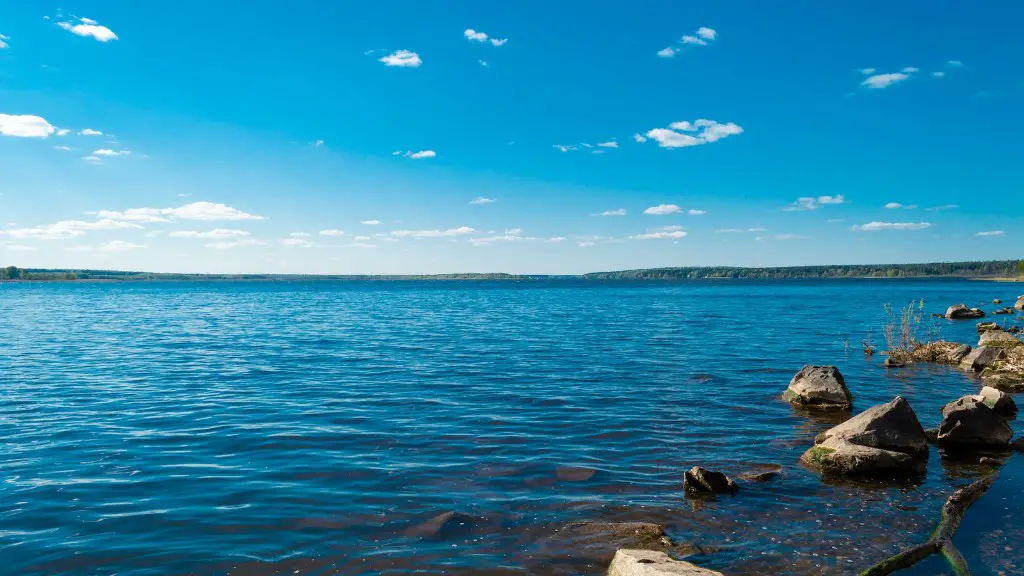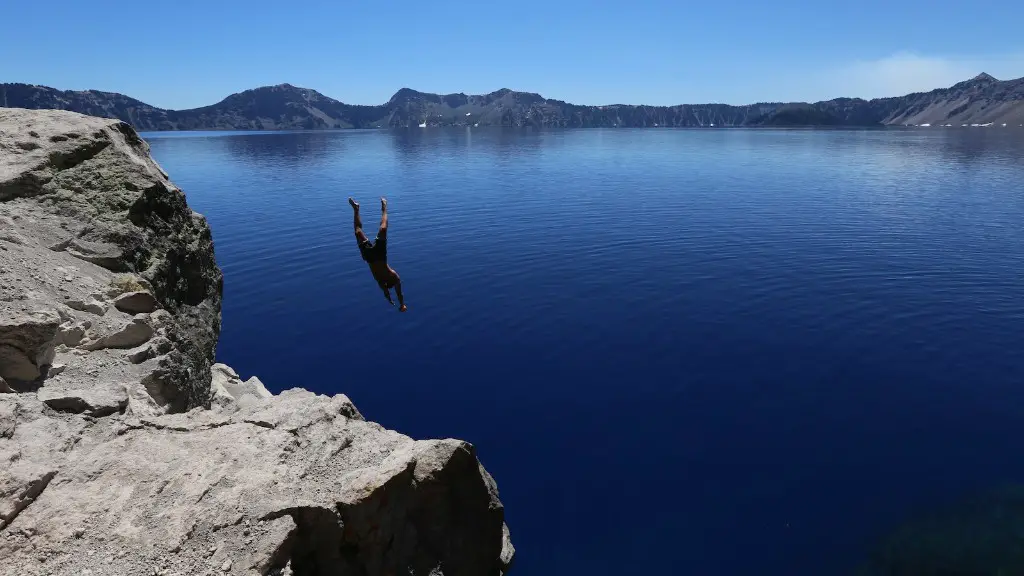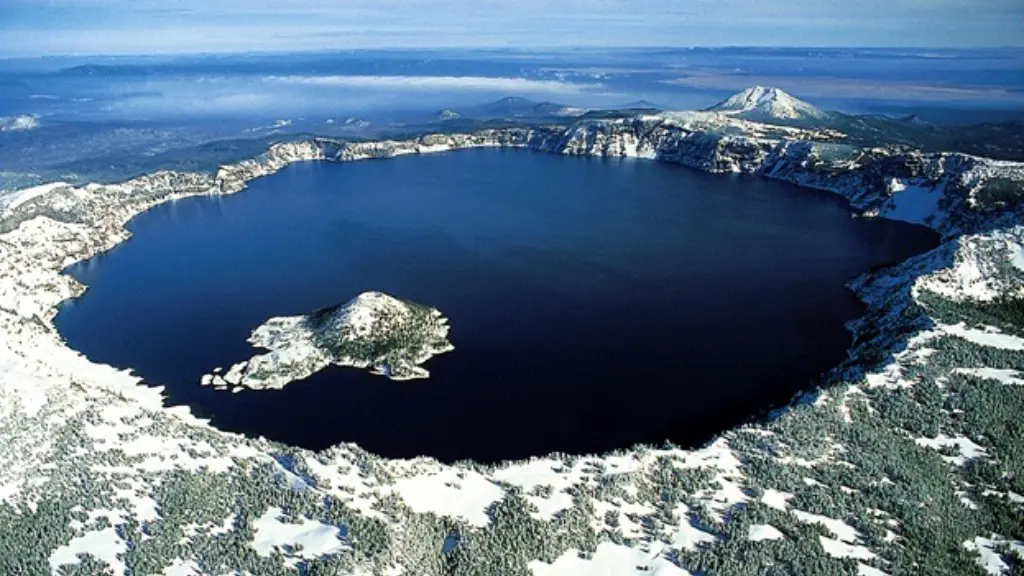Lake Victoria – A World-Famous Voluminous Expanse of Water
Lake Victoria is the largest lake in Africa, and the second largest freshwater lake in the world. Located in East Africa and surrounded by three countries, Uganda, Kenya, and Tanzania, this lake is a popular source for transportation and water for irrigation and power. The lake is famous for its magnificent beauty, as well as its abundant aquatic life and diverse ecosystem.
The lake is also known for its sheer size, making it the second largest freshwater lake in the world. It has a surface area of 68,800 km2 and a depth of 84 m or 276 ft, making it nearly twice the size of Wales or four times the size of the US state of Connecticut. The maximum length of the lake is 248km, and its width varies from 88-148km.
In addition to its immense size, Lake Victoria is also well known for its huge variety of fish species. It is home to over 250 species of fish, including the famous Nile Perch, which grows up to 2 meters in length and is an important part of the lake’s food chain.
The lake also has a vibrant and diverse ecosystem, with abundant animal life including birds, lizards, and even small mammals. The lake is also popular as a tourist destination, with boat tours that take visitors out to view the lake, as well as its stunning array of fish and wildlife.
The Ancient History of Lake Victoria
Lake Victoria has played an important role in Africa’s history and culture for centuries. For example, it is thought to be the source of the White Nile, the river that is part of the longest river system in the world and an integral part of the African continent.
There is evidence of early human settlement around the lake going back some 2,000 years. It was part of the Great Lakes region, a vast expanse of interconnected lakes in Central, Eastern and Southern Africa, which provided an important source of food for early human populations, who relied heavily on the lake for sustenance.
The lake has been considered sacred by many, and is still revered by locals living around its shores. Its waters were seen to have healing powers, and were given special treatment, with offerings and rituals carried out as a way of showing respect for the lake’s spiritual significance.
Lake Victoria Is Not The Largest Lake In The World
Despite being one of the largest fresh water lakes in the world, Lake Victoria is not the largest. This accolade belongs to Lake Superior, in North America, which is larger by surface area and depth.
According to the National Oceanic and Atmospheric Administration, Lake Superior is largest of all the Great Lakes, which span North America, covering an area of 82,103 square kilometers or 31,700 square miles, roughly the size of Austria. It also has a maximum depth of 406 meters or 1,332 feet, making it significantly deeper than Lake Victoria.
Lake Victoria Is More Than Just A Tourist Destination
Lake Victoria is also an important source of food, irrigation and electricity for the many countries surrounding it. It provides an important source of food for local fisherman, and its waters are used for irrigation and power generation.
The lake is also an important source of revenue for the countries that border it. The lake’s vibrant tourism industry provides a source of revenue for local communities, as well as employment for those in the fishing and boat chartering business.
Environmental Challenges Facing Lake Victoria
Despite its importance, Lake Victoria is facing numerous environmental challenges. Its waters are increasingly polluted with sewage and pesticides from nearby farms, as well as fertilizer runoff from local farming areas. These problems are compounded by overfishing and destructive activities such as certain kinds of boat engines, which can disturb the lakebed and cause nutrient depletion.
The situation is further complicated by the presence of invasive species, such as the Nile Perch, which can threaten the lake’s already fragile ecosystem. Furthermore, climate change is having an impact on the lake, with rising temperatures causing floods, as well as droughts.
The countries that border the lake are taking action, such as investing in better waste management systems, creating protected areas, and limiting fishing and boat chartering activities.
Long-Term Benefits Of Conserving the Lake
The need for conservation of Lake Victoria is clear. Not only does the lake provide valuable resources for local communities, but it is also an important strategic asset for the countries that border it. Protecting the lake from pollution, overfishing and invasive species will ensure its sustainability for future generations.
Finally, conserving the lake is a way of preserving its remarkable natural beauty. From its vibrant fish species, to its stunning landscapes, the lake has something to offer for everyone, and its conservation is essential for its survival.
The Need For International Collaboration
The task of conserving the lake is too big for any single country to tackle by itself. International collaboration is necessary to ensure that conservation efforts are effective and long lasting.
The governments of the countries surrounding Lake Victoria have already taken action to protect the lake, but further international support is needed to ensure that these efforts are successful. International organizations, such as the World Bank, could play a role in providing funding, technical support and advice to countries around the lake.
What Can The International Community Do?
The international community can help to protect Lake Victoria in several ways. Firstly, funding could be provided to support the efforts of local governments to conserve the lake. More importantly, public education campaigns could be launched to raise awareness of the challenges facing the lake and the importance of its conservation.
Furthermore, international organizations such as the United Nations could promote dialogue between the countries that border the lake and facilitate cooperation and the sharing of best practices. Finally, international sanctions could be imposed on those countries and companies that are failing to protect the lake, in order to ensure that the issue is taken seriously.
The Impact Of Climate Change On Lake Victoria
Climate change is having a major impact on both the environment and the people living around Lake Victoria. The warming of the lake’s waters is having a serious effect on its delicate ecosystem, as well as its abundant fish population.
The lake’s waters are becoming increasingly polluted from runoff from local farms and factories, as well as from sewage and detergents. In addition, droughts brought about by climate change are threatening the lake’s water levels, and its biodiversity is also being threatened by invasive species.
The people living around the lake are also being affected by the impacts of climate change. Increasingly extreme weather events such as floods and droughts are having a devastating effect on local communities, and the declining fish population is threatening their way of life.
Strategies To Combat The Impact Of Climate Change
To combat climate change around Lake Victoria, countries that border the lake need to invest in long-term strategies. These strategies should focus on improving the management of land, water, and natural resources, as well as improving the resilience of local communities to the effects of climate change.
In particular, climate-resilient agriculture and water management initiatives should be implemented, in order to ensure that the local communities can cope with the effects of climate change. Additionally, effective policies and regulations should be put in place to control pollution of the lake, and to protect its biodiversity.
Finally, international collaboration and support for these initiatives is essential. The international community should support local efforts to conserve the lake, and should provide funding, technical support and advice.
The Need For Sustainability
The future of Lake Victoria depends on the commitment of its countries to sustainability and conservation. Sustainable development initiatives should be implemented to ensure that the lake’s resources are managed in a responsible way.
The governments of the countries that border the lake should develop long-term plans to preserve its ecosystem and protect its biodiversity. These plans should prioritize the protection of the lake’s fish population, as well as its delicate terrestrial and aquatic environments.
More importantly, tackling the issue of climate change should be a priority. The countries that border the lake should work together to develop effective strategies to reduce their carbon emissions and adapt to the changing climate.
Finally, international support is needed to ensure that these strategies are successful. International organizations such as the United Nations and the World Bank should provide financial and technical assistance to the countries around the lake.


